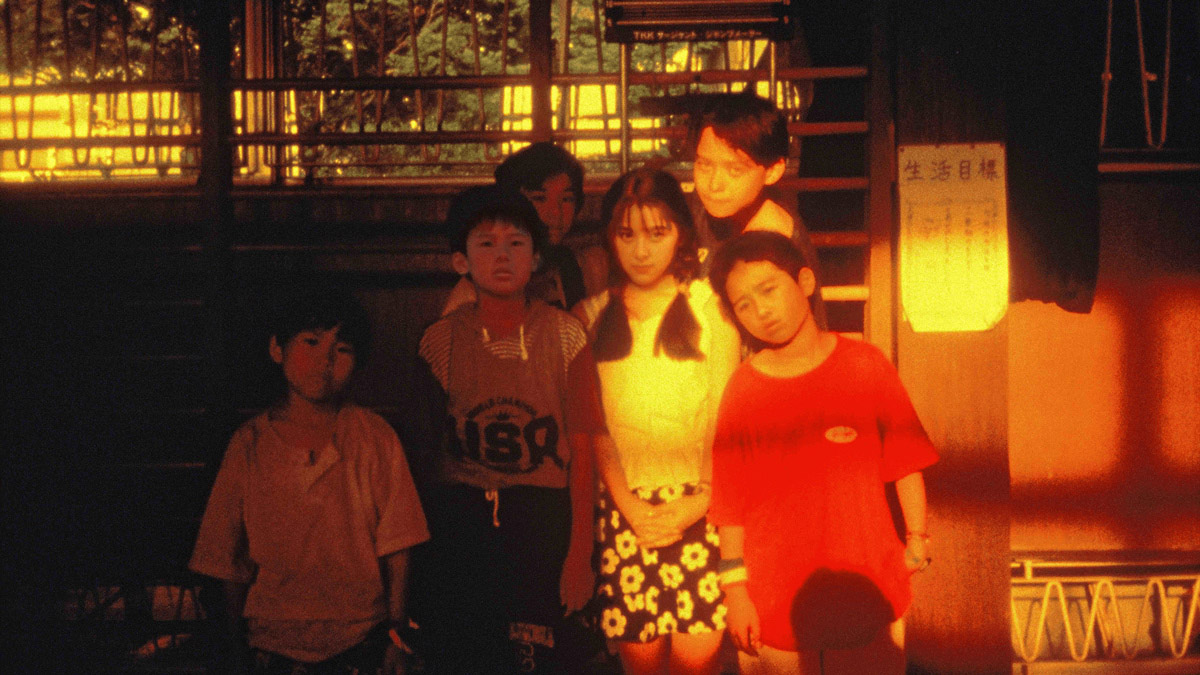
(c)Rockwell Eyes Inc.
``Fireworks, Should We See It from the Side or the Bottom?” What is Shunji Iwai's thorough strategy for handling child actors?
Should children's films use amateurs? Will you use child actors?
Returning to the children's acting in "Fireworks," children who appear in movies and TV dramas can be broadly divided into two types: child actors and amateurs. Professional children who belong to a theater company and have received acting lessons, and amateur children who know nothing about acting. Both have their pros and cons. Professional child actors will be able to accurately understand the acting style the director wants and instantly express joy, anger, sadness, and happiness, but they may also seem to be watching the adults' faces and may look like children playing children. On the other hand, amateurs can sometimes bring out a simple charm, but it depends on whether or not you can find a child with the talent. Not everyone will be attractive just because they're an amateur.
So, are the children who appear in "Fireworks" child actors? Or amateurs? Well, Iwai Shunji chose child actors -- and he chose the most professional of the pros. He said, "The child actors I used in that were all the best kids from children's theater companies like 'Himawari Theater Company' and I trained them. It's definitely faster that way. (omitted) That's the reason for the success of "The Natural". The normal kids who come to auditions are really bad, so there's no competition. I realized as I went along that it's definitely faster to train home-grown kids. I think that's because I didn't have the preconceived notion that 'children's theater companies are always going to stink.'" ( Magic Rancher , by Anno Hideaki and Iwai Shunji, published by Digital Hollywood Publishing)
Speaking of children appearing in films of this era, Somai Shinji's " Moving " (1993) and " Summer Garden " (1994) also selected children with no acting experience through auditions, with the belief that this was the most effective way to utilize child actors. In those days, Shunji Iwai's innovative thinking was to use the best child actors from theater companies, believing that they would have the skills to act The Natural if instructed, which is probably one of the reasons why this film stands out.
Another secret Iwai Shunji had in his depiction of children was that they spoke "fast." This was also the result of observing children. The children in this production speak faster than in other dramas. Sometimes it's difficult to hear the end of their sentences, but their emotions are conveyed. This was made possible by the fact that children in real life speak at a very fast pace. According to Iwai, "What I really felt while working on Fireworks was how fast children's language and speech are in all of their actions. When they become conscious of their acting, they suddenly slow down, but outside of that, their timeline is incredibly fast" (ibid.).
In fact, the lines of the children in this film are spoken in a mature tone that makes it hard to believe they are 12 years old, and they speak quickly and talkatively, moving before they have even finished their sentences. In order to reproduce this rhythm, there were more lines than in normal films, and Shunji Iwai's skill in controlling the child actors was demonstrated, leaving no room for child-like emotional expression. The creation of a masterpiece depends largely on the talent of the creator, but the skill to materialize it is also essential.
1995 was the year Shunji Iwai made his directorial debut, as did Hirokazu Koreeda and others, but all of them honed their skills in television, documentaries, and music videos before moving to film. Hitoshi Ohne, who wrote the screenplay for the anime version of Fireworks , has also been gaining experience in television for a long time, and is now blossoming in film.
Finally, a little digression. According to " Trash Basket Theater " (by Iwai Shunji, published by Kadokawa Bunko), before filming began, Iwai Shunji asked the children of the cast whether they would choose Nakama or the heroine Nazuna. Their answer was: "Absolutely Nakama. Who wants to go see fireworks with a girl?"
Text: Guinea Pig Yoshida
Born in 1978. Movie critic. Another name is Ichiro Yoshida. He has written for ``Eiga Hiho'', ``Kinema Junpo'', ``Eiga Geijutsu'', ``Scenario'', etc. His books include ``Introduction to film criticism! ” (Yosensha), co-authored with “Film director Takeshi Kitano. ” (Film Art Company) and others

“Fireworks, Should We See It from the Side or the Bottom?” Live-action deluxe edition Blu-ray BOX
Director: Shunji Iwai
Starring: Yuta Yamazaki, Megumi Okina
Product number: NNB-0001
Publisher/distributor: No Man's Nose
Price ¥7,400 (excluding tax)
(c)Rockwell Eyes Inc.

